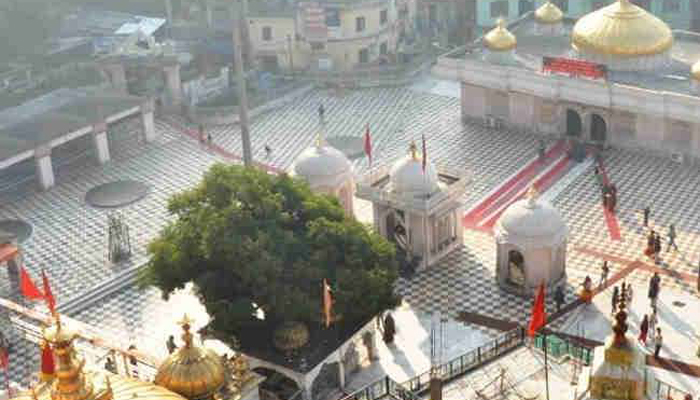Jwala Devi is one of the major 'Shakti Peethas' of India. Jwala Devi Temple is located at a distance of 34 kms in south of Kangra in Himachal Pradesh. Even from Dharamshala, it lies at a stretch of 56 kms and moreover, it is easily accessible by the regular buses from both the places. For a convenient journey, one can opt for private taxis that are available throughout the state. The temple is dedicated to Jwala Devi (form of goddess), who is the presiding in the form of flames. Due to this fact, the goddess is also referred as the 'Flaming Goddess'.
Positioned besides a cliff, Jwalamukhi Mandir is built on a wooden platform in the Indo-Sikh style of architecture. The structural design of the temple is simple, but the religious aura makes it undoubtedly divine. The dome and spire of this temple are covered with Gold. The main door of the shrine is plated with silver. In front of the main shrine, there is a huge brass bell that was presented by the King of Nepal.
In the early times, people tried to explore the fact behind these burning flames, but nothing substantial was made out. These flames are burning due to some natural jets of combustible gas. The temple came to be known as the Jwala Devi Mandir. In this temple, there is no idol because the Goddess is considered to be residing in the form of flames. This temple has nine ceaseless flames that are named as Mahakali, Annapurna, Chandi, Hinglaj, Vindhya Vasini, Mahalakshmi, Saraswati, Ambika and Anji Devi respectively.
Inside the shrine, there is a pit where several flames are burning. The offerings are made to the Goddess in this same pit. The 'Aartis' at different intervals of the day, are the main attraction of this temple. Usually, an offering of Rabri or thickened milk is made to the goddess. In the temple complex, there are several small shrines including Gorakh Dibbi and Chaturbhuj Temple. These blue flames are coming out from the fissures in the ancient rock.
Being an important pilgrimage of the Hindus, devotees come to this temple in large numbers. During the days of Navaratri, the temple is thronged by countless number of devotees. Colorful fairs are also organized for the period of Navaratri in March-April and Sep-October. Earlier, this temple was administered by the descendants of Raja. After Independence, this temple was declared as the site of Cultural Heritage and that time onwards, it is under the management of the Government. There are not less than 102 priests to look after the sermons of the temple and even these priests are paid by the Government.
Legend behind the Temple
Jwalamukhi refers to the deity with flaming mouth. As per the legends, the mouth of Sati fell here at the time of self-sacrifice. Ever since, the Goddess occupied the place and she manifested in nine flames. After years, one day Raja Bhumi Chand Katoch, a resident of Kangra and a great devotee of Goddess Durga, dreamt of the holy place.
He sent his men to locate the place. With the grace of the Goddess, the site was found and Raja started constructing a temple. It is believed that Pandavas also contributed in the erection of this temple. However, the construction of this temple was completed in the 19th century, when Maharaja Ranjit Singh and his son, Kharak Singh, gave the Gold and Silver for the dome and door respectively.
Legend about Akbar, the Mughal Emperor
During the ruling period of Akbar, he learned about the legends of Jwalamukhi. In a fit of anger, he tried to douse the flames with a stream of water. The great power of the Goddess, still kept the flames burning. Realizing the power of Jwala Devi, Akbar came with his army to this temple. He brought a Gold umbrella (Chatra) for the Goddess, but on offering, the umbrella turned into an unknown metal suggesting that the Goddess didn't accept his offering.
Location : At a distance of 34 kms in south of Kangra, Himachal Pradesh
Built in : --------
Dedicated to : Jwala Devi (a form of Shakti)
Attraction : Nine flames that are burning without fuel

